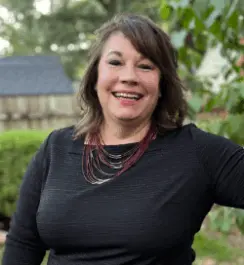 | 1 LU |
 | 1 LU |
Date / Time: October 31, 2025 | 2:15 – 3:15 pm
Room: 166-167
Audience: Architects, Engineers, Educators, Facility Personnel, Contractors / Suppliers / Manufacturers, Consultants
Call to Action: Leave with the ability to recognize key interior design features and their impact on neurodivergent learners, make meaningful connections between design and the cognitive and emotional needs of students, and apply a practical framework to evaluate design decisions for their effectiveness in supporting all learners.
Abstract: Neurodivergent learners, including those with Autism, ADHD, and other cognitive differences, often face unique challenges in traditional learning environments. How can we empower teachers and designers to create thoughtful environments that no longer separate the two different learning populations? Excellent design is inherently inclusive. By learning to analyze interior design elements holistically, these elements elevate design for the entire student population. This collaborative session will equip participants with practical tools and strategies to analyze school interiors and identify design elements that either support or hinder neurodivergent students to encourage learning for the whole student body. Through case studies, hands-on activities, and evidence-based research attendees will learn how to create spaces that foster focus, comfort, and engagement for all learners. Connecting to the cognitive and emotional aspects of the brain we can design more inclusive interior environments.
Learning Objectives:
Design of Educational Facilities
Aligning Educational, & Community vision with design to support a regenerative mindset for a sustainable and future ready Educational Facility.

Katherine is a registered interior designer with 12 years of experience, focused on creating inclusive spaces for diverse populations. With a passion for neuro interior design, they explore how the built environment impacts cognitive and emotional well-being. Their work combines functionality with well-being, using design strategies that support mental and emotional health, aiming to enhance the human experience within the spaces they create.

Brenda brings 30 years of experience in education, including roles as a classroom teacher and outdoor educational specialist. She has collaborated with diverse audiences on multi-disciplinary projects, using her expertise as an Accredited Learning Environment Planner to create visionary spaces that align with educational goals. As a Facilities Planner, Brenda is dedicated to supporting learners and those who support them, ensuring the physical environment enhances the learning journey.